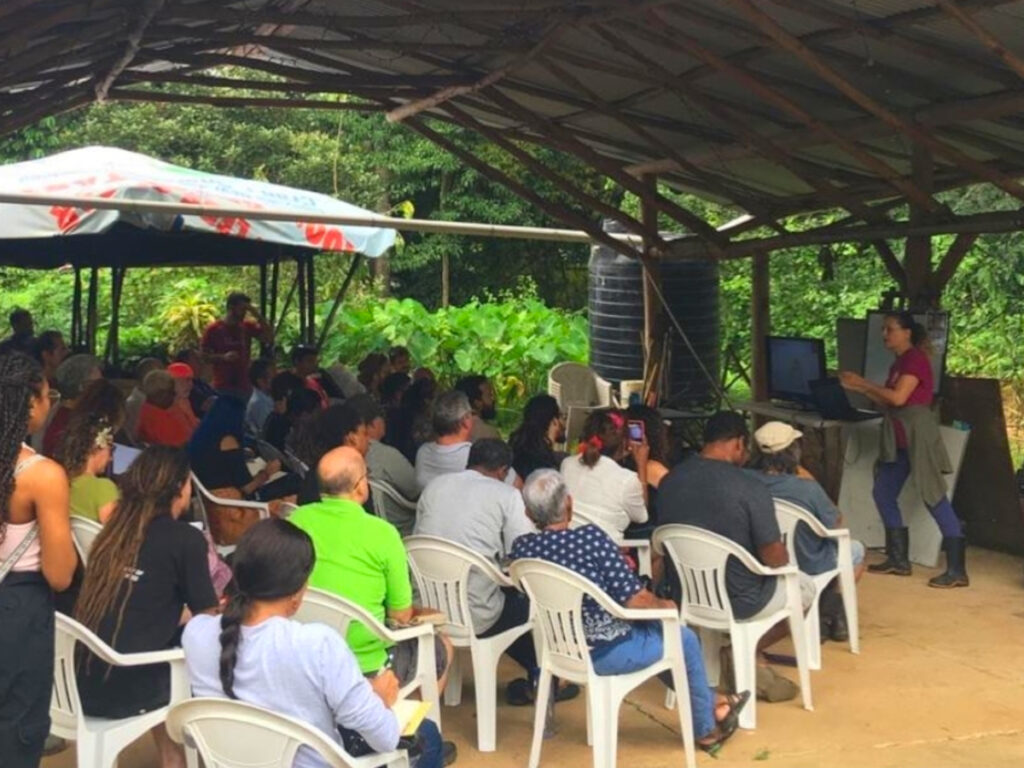28. August 2023
by Ursula “Uzzy” Arztmann

Syntropic Farming in Trinidad
On my visit to Trinidad, I found myself amidst cocoa farms that told a story of both struggle and hope.
Teaching Syntropic Farming to local cacao producers, I delved deep into the challenges and potential of the cocoa industry.
Trinidad’s Cocoa Farms: A Tale of Challenges and Potential
Many of Trinidad’s cocoa fields were hit by fungal infections like witches broom (Moniliophthora perniciosa) and black pod rot (Phytophthora spp.).
The sight of overaged trees with waning production and soils scarred by pesticide containers was disheartening.
Yet, the interest from the farmer community was palpable.
They recognized the urgent need for change, understanding that transitioning to agroforestry approaches like Syntropic Farming was vital for a sustainable future.
The Current Landscape of the Cocoa Industry
We’re at a pivotal moment in the cocoa industry, and several pressing concerns underscore this:
- Climate Concerns: Increased climate volatility is a looming threat to production.
- Aging Trees: Globally, many cacao trees are overaged with no clear transition strategy in sight.
- “Pest” Pressures: Overaging and monocultural practices have escalated “pest” pressures.
- Pollination Threats: A drastic drop in insect populations makes cacao one of the most threatened crops.
- Regulatory Pressures: From penalties to forbidden imports, the regulatory landscape is tightening, emphasizing transparency and ethical considerations.
- Socio-Political Challenges: Decreased resilience in producing countries, coupled with rising poverty, threatens supply stability and drives up prices.
The Promise of Syntropic Farming
Against this backdrop, regenerative approaches like Syntropic Farming emerge as a beacon of hope, offering:
- Superior seed quality and taste.
- A healthier work environment for farmers.
- Diversified income streams, paving the way out of poverty.
- A shift from deforestation to reforestation, restoring cacao to its natural habitat: the tropical forest understory.
- Enhanced productivity and reduced losses to “pests” and diseases.
- A boost in biodiversity, making lands eligible for initiatives like the recelio marketplace.
- Improved brand reputation, as regenerative cacao uplifts both communities and the environment.
- Greater supply chain stability, thanks to increased resilience against climate volatility.
recelio’s Commitment
At recelio, our focus is clear:
We’re addressing the core barriers hindering the adoption of regenerative practices. These challenges, especially for farmers, revolve around the lack of transition funding and knowledge.
We believe in fostering a culture of continuous learning, where farmers can exchange insights and learn from best practices in close proximity to their farms.
We envision a world where regenerative chocolate is the standard, allowing you to savor a treat that not only delights your palate but also contributes to a better world.
Chocolate’s future is not just sweet – it’s regenerative.
Join us now on our journey to make Farm Biodiversity investable!
